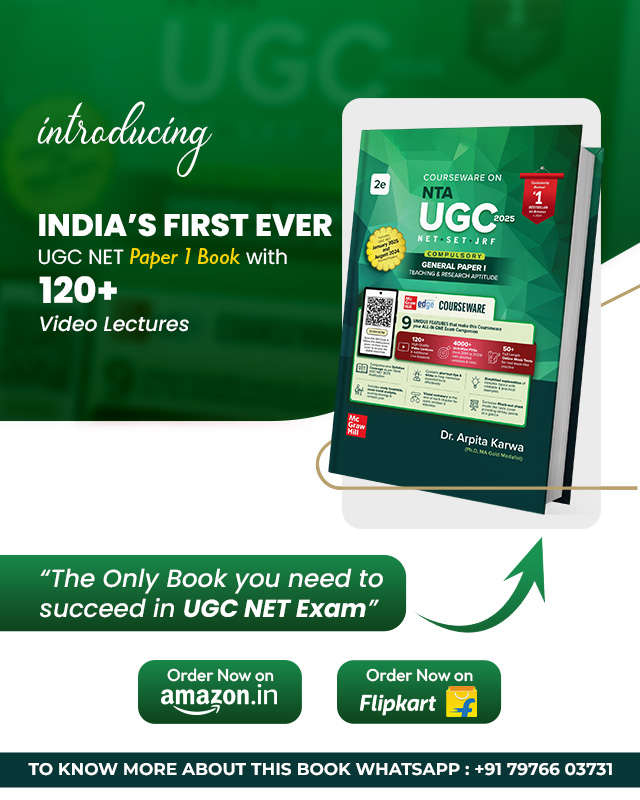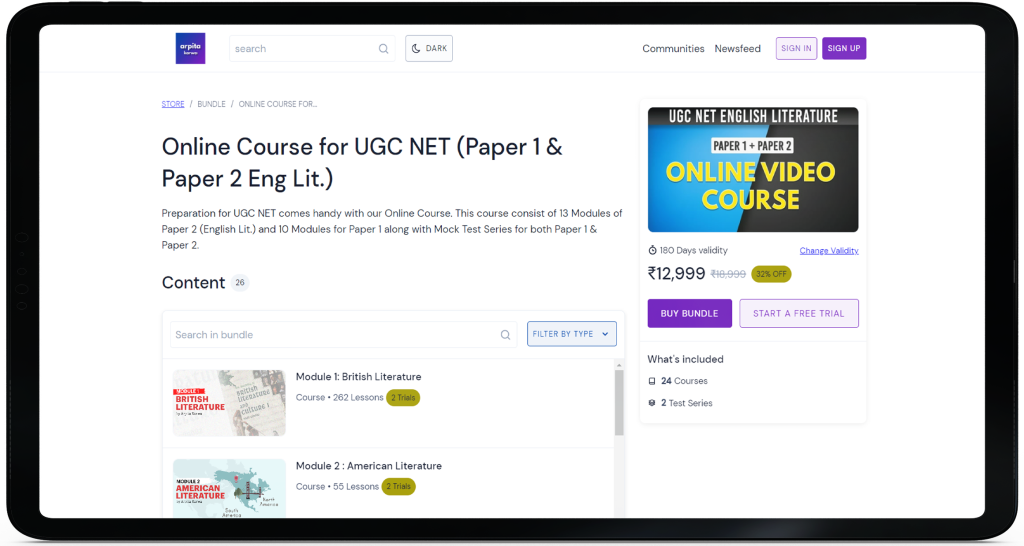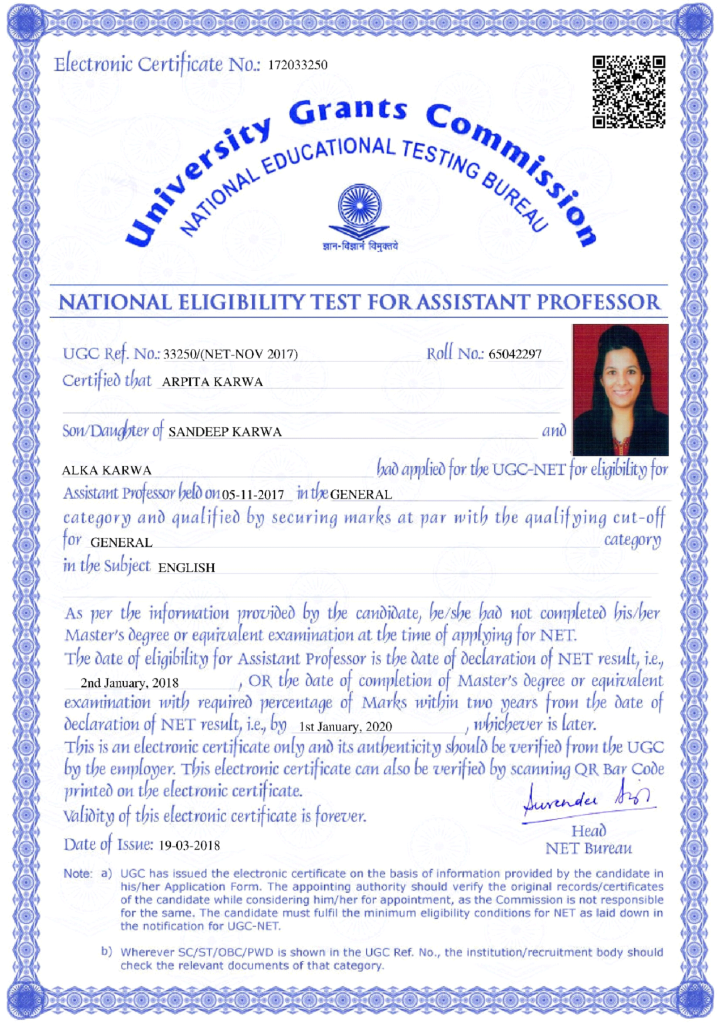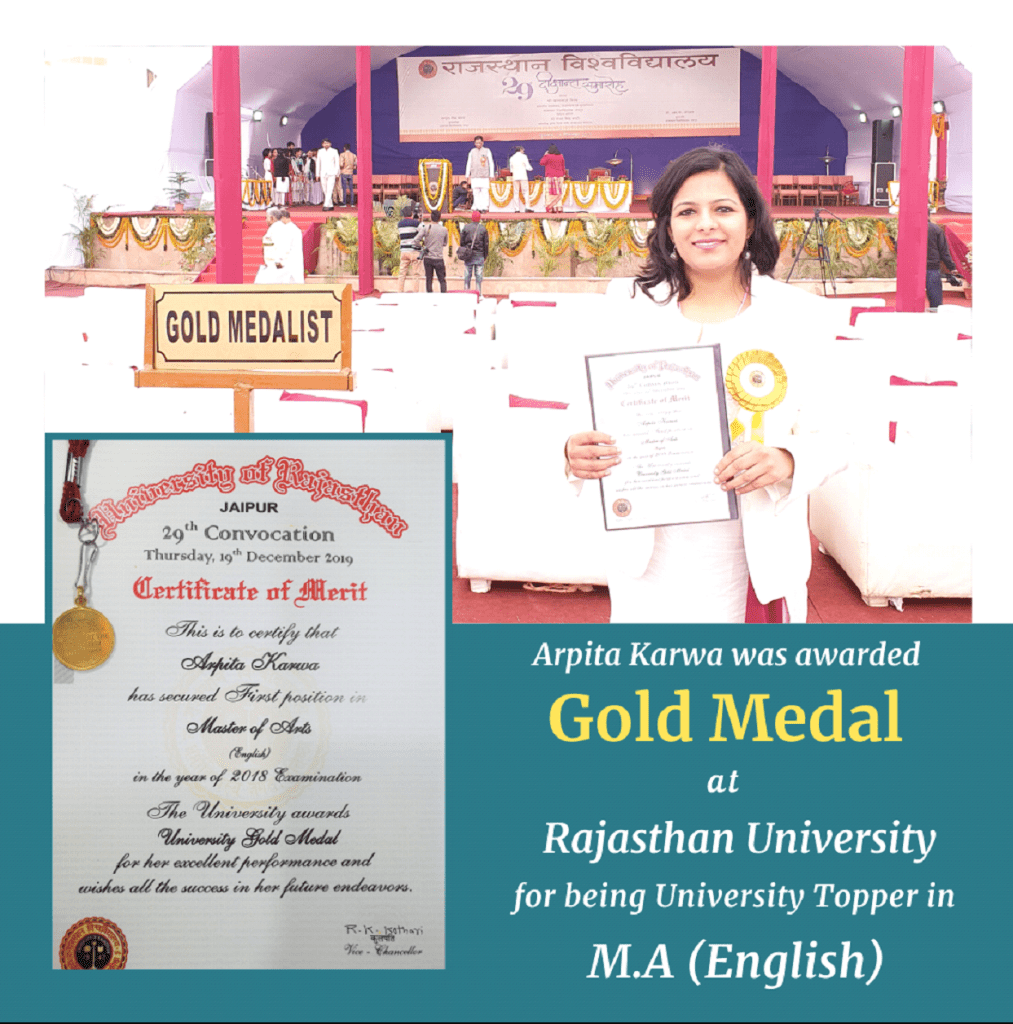JAMIA MILLIA ISLAMIA M.A. ENGLISH, ENTRANCE EXAM 2018
June 19, 2023 2023-12-09 18:34JAMIA MILLIA ISLAMIA M.A. ENGLISH, ENTRANCE EXAM 2018
JAMIA MILLIA ISLAMIA M.A. English, Entrance Exam 2018
JAMIA MILLIA ISLAMIA
M.A. ENGLISH ENTRANCE EXAM, 2018
PART-A OBJECTIVE TYPE QUESTIONS
Q.1) Which was Marlowe’s first play?
[1] Tamburlaine
[2] Edward II
[3] Dr. Faustus
[4] Jew of Malta
Answer: Edward II
Q.2) When were theatres closed in England?
[1] 1623
[2] 1632
[3] 1624
[4] 1642
Answer: 1642
Q.3) In Chaucer’s Canterbury Tales, how many tales are to be told by each pilgrim?
[1] 2
[2] 3
[3] 4
[4] 5
Answer: 4
Q.4) Which of the following poems by Keats is modelled on the style and structure of Milton’s Paradise Lost?
[1] Endymion
[2] Isabella
[3] Hyperion
[4] Lamia
Answer: Hyperion
Q.5) Which of the following poems by Tennyson is often considered as a sequel to the other?
[1] Ulysses and The Palace of Art
[2] Ulysses and The Lotus Eater
[3] Ulysses and The Lady of Shallot
[4] Ulysses and The Locksley Hall
Answer: Ulysses and The Locksley Hall
Q.6) Which figurative term did Ruskin give to English literature?
[1] Intentional Fallacy
[2] Affective Fallacy
[3] Pathetic Fallacy
[4] Apathetic Fallacy
Answer: Pathetic Fallacy
Q.7) Who is considered to be the first of the women novelists?
[1] Francis Burney
[2] George Eliot
[3] Virginia Woolf
[4] Jane Austen
Answer: Francis Burney
Q.8) Life of Charlotte Bronte was written by:
[1] Emily Bronte
[2] George Eliot
[3] Elizabeth Gaskell
[4] Charlotte Bronte
Answer: Elizabeth Gaskell
Q.9) Oxford Movement is known as the:
[1] Tractarian Movement
[2] Education Movement
[3] University Movement
[4] Pre-Raphaelite Movement
Answer: Tractarian Movement
Q.10) One of Shaw’s plays deals with the problem of phonetics and pronunciation. Which of the following is that play?
[1] Pygmalion
[2] Candida
[3] Captain Brassbound’s Conversion
[4] Major Barbara
Answer: Pygmalion
Q.11) Who among the following writers is associated with psychological realism?
[1] William James
[2] Henry James
[3] F.R. Leavis
[4] Henry Miller
Answer: Henry James
Q.12) Arnold’s Touch Stone method values:
[1] All literary pieces
[2] Only the best writings
[3] Greek writings
[4] English writings
Answer: Only the best writings
Q.13) Which of the following Indian books was widely read by Arnold?
[1] Ramayana
[2] Mahabharata
[3] Akbarnama
[4] Bhagwad Gita
Answer: Bhagwad Gita
Q.14) The title of the novel. “Things Fall Apart” comes from which of the following poems by Yeats?
[1] A Poet to his Beloved
[2] No Second Troy
[3] The Magi
[4] The Second Coming
Answer: The Second Coming
Q.15) Who said “Poetry is a speaking Picture”?
[1] Horace
[2] Longinus
[3] Sidney
[4] Shelley
Answer: Sidney
Q.16) Who coined the phrase, “Objective Correlative”?
[1] C. S. Lewis
[2] T.S. Eliot
[3] Virginia Woolf
[4] Matthew Arnold
Answer: T.S. Eliot
Q.17) Who coined the term ‘New Criticism’?
[1] J.E. Spingarn
[2] Kennethe Burke
[3] J.C. Ransome
[4] Cleanth Brooks
Answer: J.C. Ransome
Q.18) Who coined the term ‘defamiliarization’?
[1] Roman Jakobson
[2] Mikhail Bakhtin
[3] Vladimir Propp
[4] Victor Shklovsky
Answer: Victor Shklovsky
Q.19) Which critic is known for ‘dialogic criticism?’
[1] R. Jakobson
[2] V. Propp
[3] M. Bakhtin
[4] Eichenbaum
Answer: M. Bakhtin
Q.20)Formalistic Criticism related to the structure of:
[1] Literary devices
[2] Myths
[3] Content
[4] Form
Answer: Literary devices
Q.21) Semiotics is the study of:
[1] Structures
[2] Signifiers
[3] Sign
[4] Signified
Answer: Sign
Q.22) The Death of the Author was written by:
[1] Jaques Derrida
[2] Michel Foucault
[3] Roland Barthes
[4] Felix Guattari
Answer: Roland Barthes
Q.23) Who coined the term ‘intertextuality’?
[1] Helen Cixous
[2] Roland Barthes
[3] Michel Foucault
[4] Julia Kristeva
Answer: Julia Kristeva
Q.24) Who coined the term, “deconstruction”?
[1] Paul de Mann
[2] Derrida
[3] Hillis Miller
[4] Harold Bloom
Answer: Derrida
Q.25) Who coined the term “Hegemony”
[1] Louis Althusser
[2] Antonio Gramsci
[3] Terry Eagleton
[4] Michel Foucault
Answer: Antonio Gramsci
Q.26) The concept of ‘collective unconsciousness’ associated with:
[1] Sigmund Freud
[2] Carl Jung
[3] James Frazer
[4] Lacan
Answer: Carl Jung
Q.27) Wordsworth’s Lyrical Ballads was published in:
[1] 1800
[2] 1798
[3] 1802
[4] 1805
Answer: 1798
Q.28) Who defined Poetry as, “Criticism of Life”?
[1] T.S. Eliot
[2] Matthew Arnold
[3] Shelley
[4] Sidney
Answer: Matthew Arnold
Q.29) Walter Pater was a votary of:
[1] Art for Morality’s sake
[2] An for Art’s sake
[3] Art for Culture’s sake
[4] Art for Society’s sake
Answer: An for Art’s sake
Q.30) When a girl is drawn to her father, in Freudianism, is:
[1] Electra Complex
[2] Oedipus Complex
[3] Narcissism
[4] Thanatos
Answer: Electra Complex
Q.31) The term ‘post-modern’ was first used in the context of:
[1] Literature
[2] Architecture
[3] Sculpture
[4] Painting
Answer: Literature
Q.32) ‘Theatre of the Absurd’ was a term coined by:
[1] Derrida
[2] Kafka
[3] Martin Esslin
[4] Michel Foucault
Answer: Martin Esslin
Q.33) Who is associated with ‘Epic Theatre’?
[1] Bertolt Brecht
[2] Martin Esslin
[3] Artaud
[4] Michel Foucault
Answer: Bertolt Brecht
Q.34) A Room of One’s Own’ (1929) was written by:
[1] Kate Millet
[2] Toril Moi
[3] Simone de Beauvoir
[4] Virginia Woolf
Answer: Virginia Woolf
Q.35) “………. It is to Indian fiction what Tolstoy’s War and Peace is to the Russian” which of Tagore’s novels has been referred to here?
[1] The Wreck
[2] The Home and the World
[3] Binodini
[4] Gora
Answer: Gora
Q.36) “The Temple” is a trilogy of lyric sequence by:
[1] K. Ramanujan
[2] Sarojini Naidu
[3] Rabindranath Tagore
[4] Nissim Ezekeil
Answer: Sarojini Naidu
Q.37) Which novel of Anita Desai is considered to be ‘an epic on Calcutta’?
[1] Bye-Bye Blackbird
[2] Voices in the City
[3] The Village by the Sea
[4] Fire on the Mountain
Answer: Voices in the City
Q.38) Which of the following bears the title of a novel as well as poem?
[1] The Rape of Lucrece
[2] Gone with the Wind
[3] Ulysses
[4] Prometheus Unbound
Answer: Gone with the Wind
Q.39) Identify the work which is not written by Shakespeare:
[1] Titus Andronicus
[2] Caeser and Cleopatra
[3] Taming of the Shrew
[4] Much Ado About Nothing
Answer: Caeser and Cleopatra
Q.40) Who said, “I am an Indian, very brown, born in Malabar……”?
[1] Jai Nimbkar
[2] Adil Jussawala
[3] Shiv. K. Kumar
[4] Kamala Das
Answer: Kamala Das
PART-B: SUBJECTIVE TYPE QUESTIONS
Q.1) Write an essay on any one of the following in not more than 750 words:
(A) “Everything in the realm of culture is determined by something outside culture” – Terry Eagleton
(B) “Literature has something to say about reality, and is in fact one of the clearest available windows for looking out on to reality”- Cleanth Brooks
(C) “Analysis of narrative means the study of a totality of actions and situations taken in themselves through which knowledge of the totality comes to us” — Genard Genette from “Narrative Discourse: An Essay in Method”.
Answer: (C) The study of narrative is known as narratology and it stemmed mainly from
literary studies. The field of narratology is vast and can be applied to everything from politics and social
media to sports, with many contributions to the study from all parts of academia in many subject areas.
Essentially though, the core definition of narrative is straight forward and easy to follow: it is the study
of stories, how they are made and how they are told.
Gerard Genettle’s definition of narrative has three levels, which can be studied separately but which are all
needed to completely understand the term narrative. The first level to be considered is the familiar, common
everyday usage of the word: narrative as ‘the oral or written discourse that undertakes to tell of an event
or a series of events’. This is the communicative elements of the narrative, the story itself. The story is
made up of contents, the component parts of the story, the themes, the characters and so on, the discourse
subjects. How we construct that narrative, how we see it linking in with other narratives, or how
complicated we can make it becomes the deeper level of understanding a narrative as something which we can
study. The study or analysis of narrative ‘means the study of a totality of a totality of actions, and
situations taken in themselves, without regard to the medium, linguistic or other, through which knowledge
of that totality comes to us’. We can consider the subject of a narrative discourse a text, whether that
discourse comes in the form of a book,or a film, a performance or a photograph, the medium is, at this first
level and as far as this approach is concerned, less important. The discourse, at a second level, makes
sense of what happens, or all the things which happen in the text, all the actions and the interactions. To
pick out the narrative then, is to identify all the elements which help us see it as a narrative: to gather
up all the event information and understand how those elements work together to give us the overall sense of
what has happened. This can be done in the same way nomatter how the narrative has been delivered to us and
it is therefore separate from the third level of understanding, how it has been narrated. This third way of
thinking about narrative is to consider how the narrative is delivered. So, it is not just about the story,
or the content, but acknowledges that ‘the event consists of someone recounting something. How something is
narrated, how the knowledge is delivered to us by a person, is different from how we understand the
knowledge. If it has been told to us in person, related from a stage, watched on film or read on social
media, what form or structure the narrative content gets delivered in becomes as important as the content
itself but for Genette, narration happens within a medium and does not form part of the narration and should
be distinguished from the narrative.
What is important to note is that a narrative’s discourse, a story, must not be confused with narration, the
delivery of that story, or the subject discourse of the narrative, the story content. Simultaneously, it is
also important to note that the study of narrative is to understand it constantly implies a study of
relationships’ between these positions. The story, its subjects and its delivery can be looked at separately
from the medium in which it is presented and understood no matter which medium is chosen. A narrative in a
graphic novel therefore can be understood in the same ways as a narrative in film, or a narrative in a book,
provided they are looked at separately. If those narratives are regarded as separate they can be understood
as exclusively separate from the medium in which they are presented and therefore isolated as separate
studies tests. Genette’s approach is not without its limitations however and though it is suitable for
examining the narratives found in literature, it becomes problematic when comparing narratives which bridge
visual art forms. Genette’s definition relies upon a separation between the medium and the content and this
can be interesting when the narrative spans media or jumps from one to the other offering some comparative
opportunities to understand the connections of media and narrative. It can be particularly problematic
however when two media are outwardly similar, or appear alike to the audience but are very different in
terms of narrative.
When considering film set design, narrative is particularly important to the creation and understanding of
the design of a film or television world, but narrative functions very differently in film and television,
even if set design serves the distinct media in the same industrial/creative ways. Television and film have
their separate narratological studies and when they seem similar in terms of narrative they may be quite far
removed. The narrative techniques that make television drama function are those which develop characters and
story complexities over long periods of time and many episodes. Such techniques would not work in film and
would not be acceptable practice in the production of a 90-minute feature film because films tend to be much
more linear and finite.
The knowledge of the totality, the narrative statement, is a product of the succession of the events and
their linking. That is, the study of the totality – not the separate incident – is the aim for discovering
the thought, the subject matter. Form is merely a communicative vehicle rather than a unit of knowledge.
Q.2) Write a reflective essay on any one of the following in not more than 500 words:
(a) Translation
(b) The Art of Poetry
(c) Women’s Writing in English
Answer: (C)- Since time immemorial women have been treated as a vulnerable section of
society. It is indeed an irony to see that they have never enjoyed the kind of opportunities as enjoyed by
males. The condition of women has been pathetic in our male-dominated society. As a result, they have to
face more challenges in their lives. Gradually, women realized that as human beings, they should also enjoy
equal rights and opportunities with men.
Even in the field of literature, they were never taken seriously in the patriarchal social construction.
They became victims of gender discrimination. This feeling gave rise to a movement called Feminism. It
gathered momentum in the 1960s. The movement basically aimed at achieving equality with men in terms of
opportunities, rights, and participation in all spheres of life. Increasing number of women writers started
projecting the plight of women in their works. Women’s liberation and emancipation became important.
The pioneer writers of this area, who have produced commendable works and need to be mentioned are Mary
Wollstonecraft, Virginia Woolf, Simone de Beauvoir, Elaine Showalter. They openly discussed the plight and
problems faced by women and diverted the attention towards woman as reader and woman as writer. The gender
discrimination was openly discussed. The Indian woman writers were not far behind, they also presented their
perspectives regarding the pathetic condition of women under male hegemony.
Gradually, an increasing number of women writers started representing the section of society that has been
marginalized on the basis of sexuality, language, caste, and religion in their writings.
The women writers also faced many challenges in the male-dominated society. They did not have ready
sentences for them to use. The feminist viewpoint was ignored in literary criticism due to the superiority
of males. Masculine dominance did not allow any space for the perpetuation of women writers and their
ideology.
and steadily, women have made their permanent mark in the field of English literature. Today, they are being
conferred not only with national but international awards. They have proved their worth and their works are
now being praised and appreciated on the global platform. In most of their works, the women writers have
tried their best to free the female mentality from the age-old domination of males.
If this endless effort on the part of women for the sake of women go on, the days are not far when they will
be equated with men in all respects and in each and every field of life. So the thing that is required today
in our society, for its betterment, is a reciprocal and friendly relation between both the sexes in the true
sense.
















